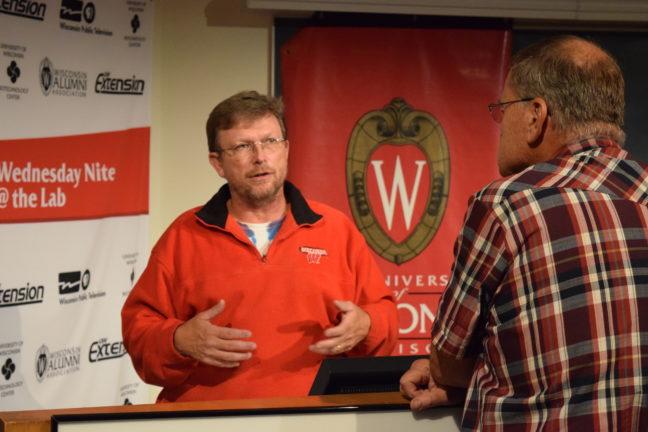As coordinator for the Wednesday Nite @ the Lab public lecture series, Tom Zinnen isn’t usually the one on stage behind the microphone.
This Wednesday, however, Zinnen lived up to his notoriety as the “pinch hitter” to deliver a review of updates in modern biotechnology and agricultural food.
He recounted the history of genetic biotechnology, from the early uses of Agrobacterium tumefaceins — also known as Rhizobium radiobacter — to the now breakthrough gene editing tool known as Clustered Regularly Interspaced Short Palindromic Repeats, which lays the foundations for policy framework that arose from the science.
“Here, this thing called CRISPR comes in,” Zinnen said. “There had been other gene editing tools, but they were kind of klutzy and clumsy … and once they figured out how to combine CAS9 protein with the CRISPR, now you got this cool gene editing tool.”
Student researcher uses art and music to understand, teach science of astrobotany
In 1986, as transgenic techniques began to emerge, the Food and Drug Administration created a policy framework to ensure the safety of new biotechnology products for the environment and human and animal health.
Several other updates were introduced by the U.S. Department of Agriculture to regulate human and animal genetically engineered foods, which Zinnen said are now obsolete given the current available technology.
With the advent of CRISPR and Cas9, as of 2014, regulations no longer apply to genetically engineered food products, Zinnen said.
The new, very specific genome editing techniques of CRISPR do not fall into the category of standard genetic engineering techniques, which traditionally include transgenic methods that recombine genes from other organisms, Zinnen said.
“The whole framework for the U.S. way of regulating transgenic plants was it had to be a trans gene — in order words, transferred,” Zinnen said.
Accelerator trains UW computer science students in entrepreneurship
Without the transfer of other genes, neither the USDA nor the FDA had jurisdiction over this process, Zinnen said.
Companies like AquaBounty Technology gained the ability to introduce new products, like their genetically engineered AquAdvantage Salmon, which qualify for FDA approval under these new interpretation of the regulations, Zinnen said.
Without clear-cut rules for regulating GE products, the public is left to debate the merits of CRISPR gene editing techniques, Zinnen said.
“I’d like to leave you with this idea: is it safe vs. is it safe enough?” Zinnen asked. “Science can help assess the risk, but politics draws the threshold of acceptance.”



















